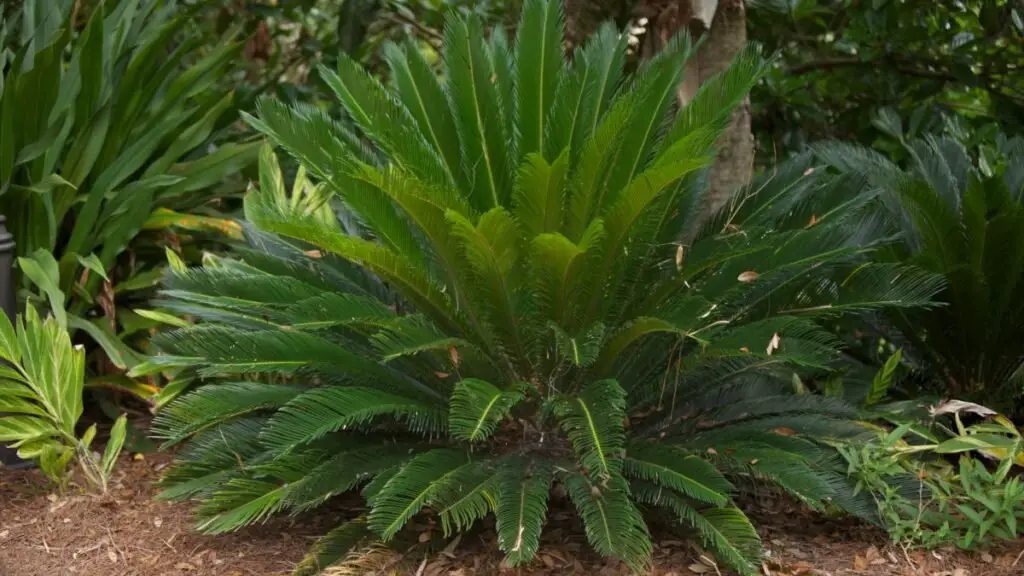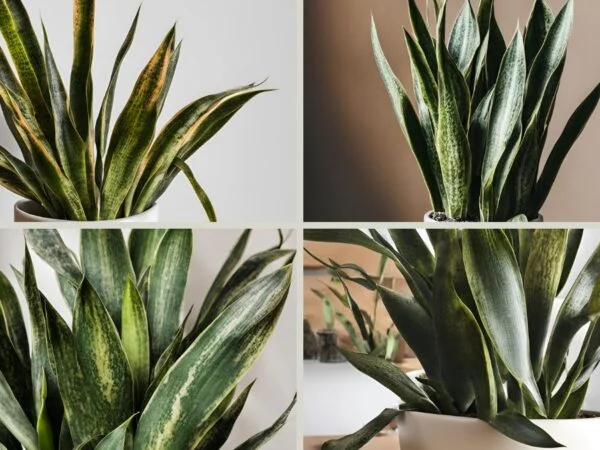Sago palm leaves turning yellow can be a distressing sight for plant owners. Understanding the causes behind this issue is crucial to restoring your plant's health and vibrancy. By gaining insights into the care requirements of sago palms, you can ensure that your plants thrive and maintain their lush green appearance. Stay tuned to learn how to keep your sago palm looking healthy and vibrant.
Identifying Yellow Leaf Causes
Signs of Discoloration
Inspect sago palm leaves for any yellowing or browning, which could indicate underlying issues. Look closely at the entire plant.
Stress Factors
Consider potential causes of yellowing, such as extreme temperatures or inadequate light exposure. Ensure the plant's environment is suitable.
Pests and Diseases
Examine the leaves for any signs of pests or diseases that may be impacting their health. Treat promptly to prevent further damage.
Correct Watering Techniques

Adjust Watering
Plants like the sago palm need consistent moisture, but not too much. Ensure you adjust watering based on the plant's needs to prevent yellowing leaves.
Bottom Watering
To avoid overwatering, consider implementing bottom watering. This technique allows the plant to absorb water from the roots up, preventing waterlogged soil.
Well-Draining Soil
Using a well-draining soil mix is crucial for the health of your sago palm. Make sure the pots have proper drainage holes to prevent water accumulation.
Soil Moisture and Drainage
Assess Moisture Levels
To determine soil moisture, use a garden trowel to dig into the soil around the sago palm. Check if the soil feels damp or dry.
Ensure Proper Drainage
Drainage is crucial for preventing waterlogging, which can lead to yellowing leaves. Ensure pots have adequate drainage holes for excess water to escape.
Improve Soil Drainage
Enhance soil drainage by using a well-draining mix that allows excess water to flow out easily. This helps maintain optimal moisture levels for sago palms.
When it comes to sago palm care, monitoring soil moisture and ensuring proper drainage are essential for keeping the plant healthy. Incorrect watering practices can result in yellowing leaves and overall decline in plant health. By assessing moisture levels regularly and enhancing soil drainage, you can prevent issues such as root rot and nutrient deficiencies. Remember, sago palms prefer slightly moist soil but dislike sitting in waterlogged conditions.
Nutrient Management Tips
Balanced Fertilization
Apply balanced fertilization to ensure your sago palm leaves stay healthy. This involves providing nitrogen, phosphorus, and potassium in the right amounts. These nutrients are crucial for vibrant green foliage.
Make sure to use a complete granular fertilizer specifically formulated for palm trees. This type of fertilizer contains a balanced mix of essential nutrients that sago palms need to thrive. It helps prevent yellowing leaves caused by nutrient deficiencies.
Address Specific Deficiencies
etimes, sago palm leaves turn yellow due to specific nutrient deficiencies like manganese or potassium deficiency. To tackle this issue, you can conduct soil tests to identify any lacking nutrients accurately. Once identified, you can address these deficiencies through targeted fertilization.
- Pros of Balanced Fertilization:
- Ensures overall health of sago palms.
- Prevents yellowing of leaves.
- Cons of Incorrect Nutrient Management:
- Can lead to stunted growth.
- May result in permanent damage to the plant.
Environmental Stress Mitigation
Drafts and Vents
Avoid placing Sago Palms near drafts and vents indoors as these can cause stress to the plant.
When exposed to drafts, the palm leaves may begin turning yellow, indicating that the plant is under stress.
To mitigate this, ensure that your indoor Sago Palm is positioned away from any sources of drafts or vents.
Sunlight and Shade
For outdoor Sago Palms, it is essential to provide them with an optimal balance of sunlight and shade.
Placing the plant in a spot where it receives adequate sunlight while also having partial shade can help reduce stress levels.
Acclimating the palm gradually to new environments helps it adjust better and minimizes the risk of stress-induced yellowing of leaves.
Light and Shade Balance
Sunlight Exposure
Sago palm leaves turning yellow can be a sign of inadequate sunlight. Ensure your palms receive adequate bright light to thrive. Place them near a bright window for optimal growth.
Indoor Care Tips
For indoor Sago Palms, striking a balance between light and shade is crucial. Provide indirect sunlight to prevent sunburn on the leaves. Consider rotating the plant to ensure even exposure.
Outdoor Maintenance
When growing Sago Palms outdoors, choose spots that offer a mix of direct sunlight and shade throughout the day. This balance helps in maintaining healthy green leaves.
Regular Plant Inspection
Check Leaves
Inspect sago palm leaves regularly to ensure they are healthy. Look for any yellowing or browning, which could indicate issues with the plant's health. Remove any dead or damaged leaves promptly to encourage new growth.
Monitor Pests
Keep an eye out for pests that may harm your sago palm. Common pests include mealybugs and spider mites. If you notice any signs of infestation, such as webbing or sticky residue on the leaves, take action immediately to prevent further damage.
Clean Leaves
Regularly clean the leaves of your sago palm to remove dust and debris that can block sunlight absorption. Gently wipe the leaves with a damp cloth or spray them with water to keep them clean and healthy. This simple step can promote better growth and overall plant health.
Inspecting your sago palm regularly is essential for maintaining its health and vitality. By checking the leaves for discoloration, monitoring for pests, and keeping the foliage clean, you can ensure that your plant thrives. Remember, a little care goes a long way in keeping your happy plant looking its best.
Pruning for Health
Prune Leaves
Prune yellowed or damaged leaves on sago palm trees to encourage new growth and overall plant health. Removing these leaves helps the tree allocate resources more effectively.
Regularly inspect your sago palm for any signs of yellowing or damage. Trim these leaves close to the trunk using clean, sharp shears. This practice not only enhances the tree's appearance but also prevents potential diseases from spreading.
Leaf Maintenance
Wipe down the remaining leaves with a damp cloth to keep them clean and free from dust. This simple act can significantly impact the plant's ability to photosynthesize, promoting healthy growth throughout the entire tree.
Dust and debris can accumulate on sago palm leaves, hindering their ability to absorb sunlight efficiently. By gently wiping down each leaf, you ensure that they can carry out their essential function of converting light into energy effectively.
Pest Control
If you notice pests infesting your sago palm, particularly in spring, consider using neem oil as a natural pest control remedy. Neem oil is effective against a variety of common pests such as scales and mealybugs.
Mix neem oil with water according to the manufacturer's instructions and spray it onto affected areas of the plant. This treatment helps eradicate pests while being gentle on the plant itself, making it a safe and eco-friendly option for pest control.
When to Seek More Help
Pest Infestation
If sago palm leaves are turning yellow due to severe pest infestation, professional help may be necessary. Pests like spider mites or scale insects can cause significant damage.
Consult a specialist if the yellowing persists despite efforts to control the pests. Experts can provide targeted treatments to save the plant from further decline.
Disease Infection
Yellowing leaves could also indicate disease infection, requiring immediate attention. Certain diseases, such as fungal infections or bacterial leaf spot, can lead to irreversible damage.
Seek assistance if the plant shows signs of severe stress or decline despite preventive measures. A professional diagnosis can help identify the specific disease and recommend appropriate treatment.
Closing Thoughts
Frequently Asked Questions
Why are my sago palm leaves turning yellow?
Sago palm leaves can turn yellow due to overwatering, nutrient deficiencies, inadequate sunlight, or pest infestations. Proper diagnosis is essential to determine the specific cause and apply the correct remedy.
How do I identify the causes of yellow leaves on my sago palm?
Check for signs of overwatering, inspect soil moisture levels, assess drainage quality, evaluate nutrient deficiencies, observe sunlight exposure, and look for any environmental stress factors affecting your sago palm.
What watering techniques should I follow to prevent yellowing of sago palm leaves?
Water your sago palm sparingly but deeply, allowing the soil to dry out slightly between waterings. Ensure proper drainage to prevent waterlogging, as excessive moisture can lead to root rot and yellowing leaves.
How can I manage soil moisture effectively to maintain healthy sago palm leaves?
Use well-draining soil mixtures tailored for palms and ensure adequate drainage in pots or planting areas. Monitor soil moisture regularly by checking the top layers for dryness before watering again.
When should I seek professional help for my yellowing sago palm?
If despite adjusting watering practices and addressing nutrient deficiencies your sago palm's condition worsens or new symptoms appear, consult a plant expert or horticulturist for accurate diagnosis and specialized care.
Image Source: Paid image from CANVA



